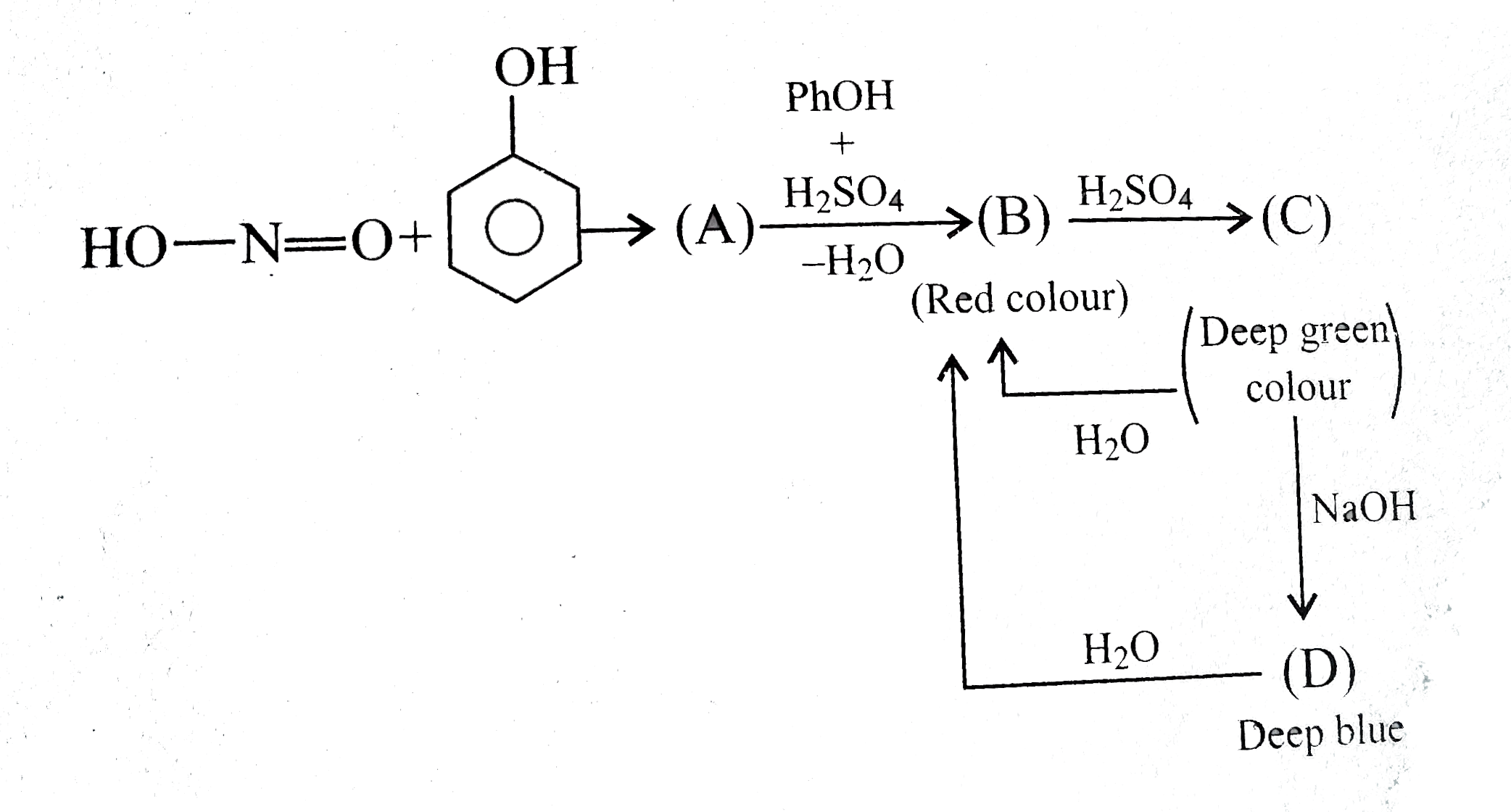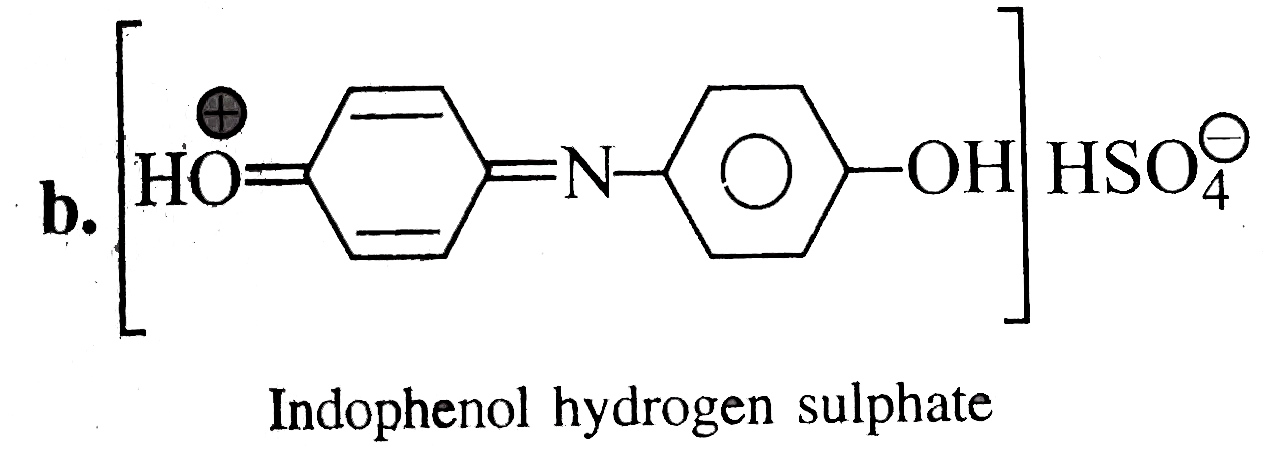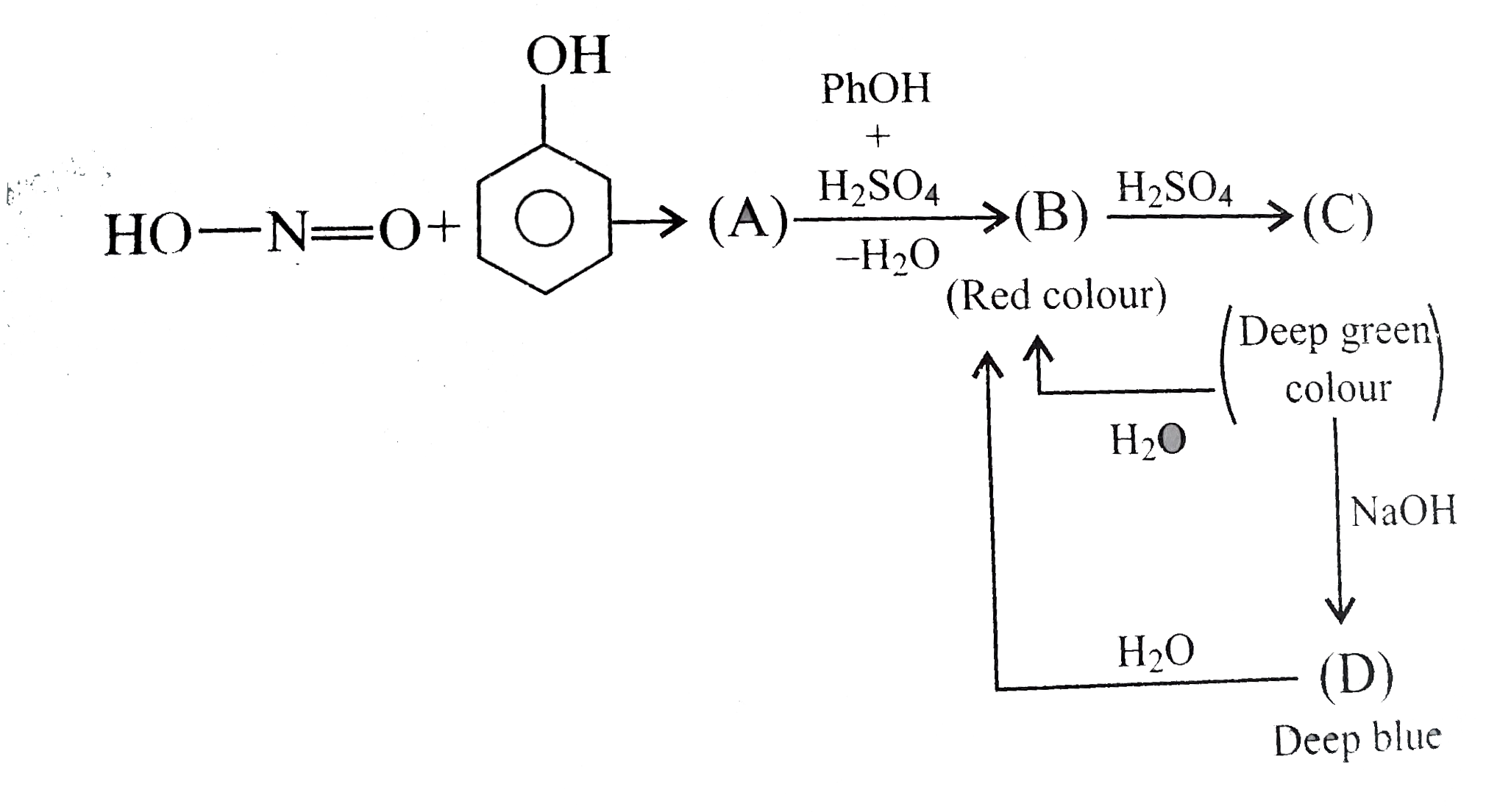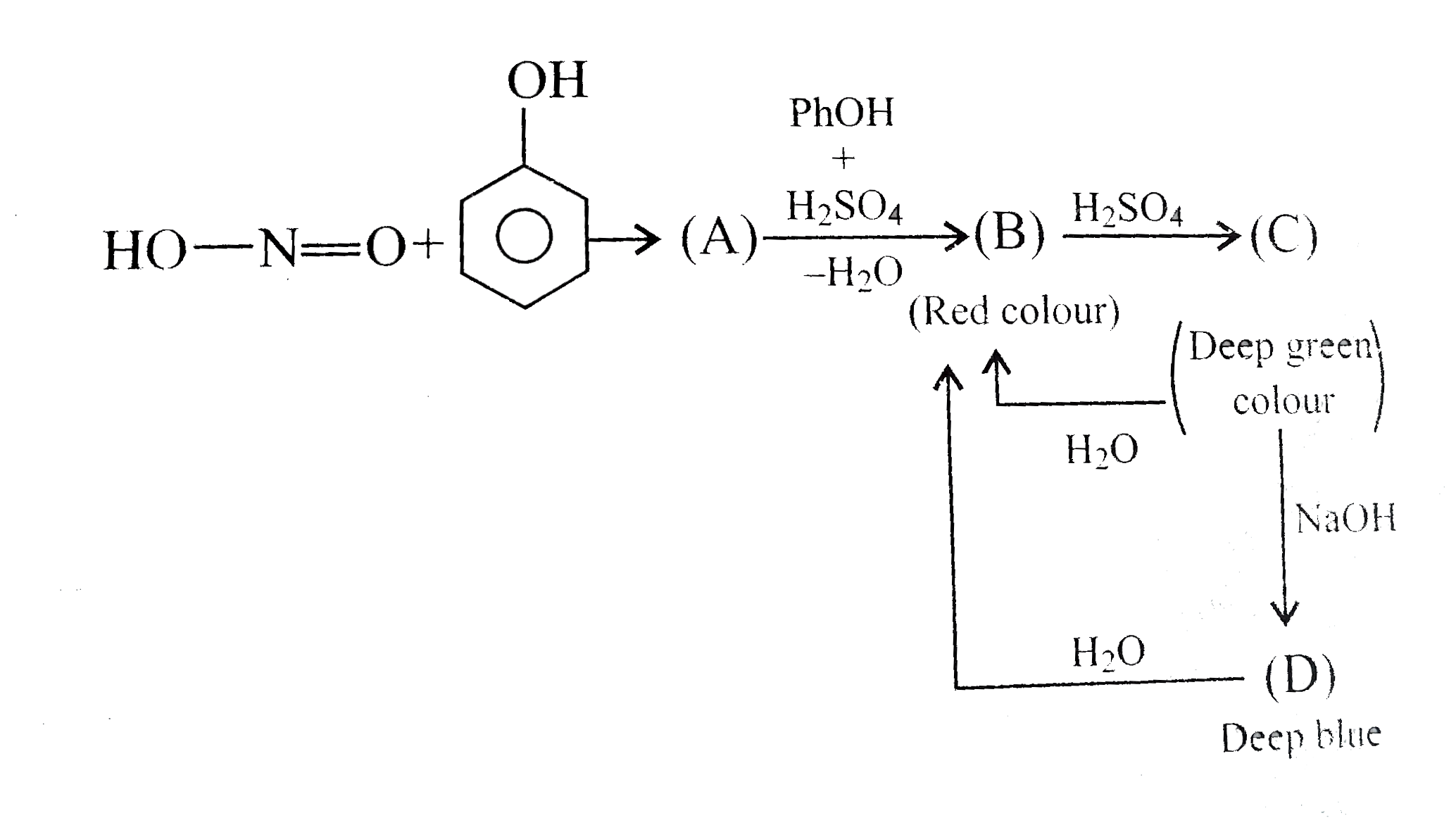
The deep blue colour of compound (D) is due to the formation of:
A
a.
B
b.
C
c.
D
d.Both (a) and (b).
Text Solution
The correct Answer is:C
It is an example of Liebermann's nitroso reaction (test for nitroso group or test for phenol).

|
Topper's Solved these Questions
- REDUCTION AND OXIDATION REACTION OF ORGANIC COMPOUNDSBOOK - CENGAGE CHEMISTRY ENGLISHCHAPTER - REDUCTION AND OXIDATION REACTION OF ORGANIC COMPOUNDSEXERCISE - Exercise (Multiple Correct)
35 Videos
- REDUCTION AND OXIDATION REACTION OF ORGANIC COMPOUNDSBOOK - CENGAGE CHEMISTRY ENGLISHCHAPTER - REDUCTION AND OXIDATION REACTION OF ORGANIC COMPOUNDSEXERCISE - Exercise (Single Correct)
90 Videos
- REDUCTION AND OXIDATION REACTION OF ORGANIC COMPOUNDSBOOK - CENGAGE CHEMISTRY ENGLISHCHAPTER - REDUCTION AND OXIDATION REACTION OF ORGANIC COMPOUNDSEXERCISE - EXERCISES
1 Videos
- QUALITATIVE INORGANIC SALT ANALYSISBOOK - CENGAGE CHEMISTRY ENGLISHCHAPTER - QUALITATIVE INORGANIC SALT ANALYSISEXERCISE - Viva Voce Questions And Part-C (Analysis Of Cations)
42 Videos
- SOLID STATEBOOK - CENGAGE CHEMISTRY ENGLISHCHAPTER - SOLID STATEEXERCISE - Ex 1.2 (Objective)
9 Videos
Similar Questions
Knowledge Check

The red colour of compound (B) is due to the formation of:Aa. Bb.
Bb. Cc.
Cc. Dd.Both (a) and (b).
Dd.Both (a) and (b).When ammonia is added to cupric salt solution, the deep blue colour is observed it is due to the formation of:
A[Cu(OH)4]2−B[Cu(NH3)4]2+C[Cu(H2O)2(NH3)2]2+D[Cu(H2O)4]2−When ammonia is added to cupric salt solution, the deep blue colour is observed it is due to the formation of:
A[Cu(OH)4]2−B[Cu(NH3)4]2+C[Cu(H2O)2(NH3)2]2+D[Cu(H2O)4]2−
When ammonia is added to cupric salt solution, the deep blue colour is observed it is due to the formation of:
View SolutionIn the borax test of Co2+ , the blue colour of bead is due to the formation of
View SolutionChoose the most appropriate options.
The metallic sodium dissolved in liquid ammonia to form a deep blue colour solution.The deep blue colour is due to the formation of
View SolutionIn Lassaigne's test for the detection of nitrogen, the blue colouration is due to the formation of
View SolutionIn the Borax bead test of Co2+, the blue colour of bead is due to the formation of :
View Solution

